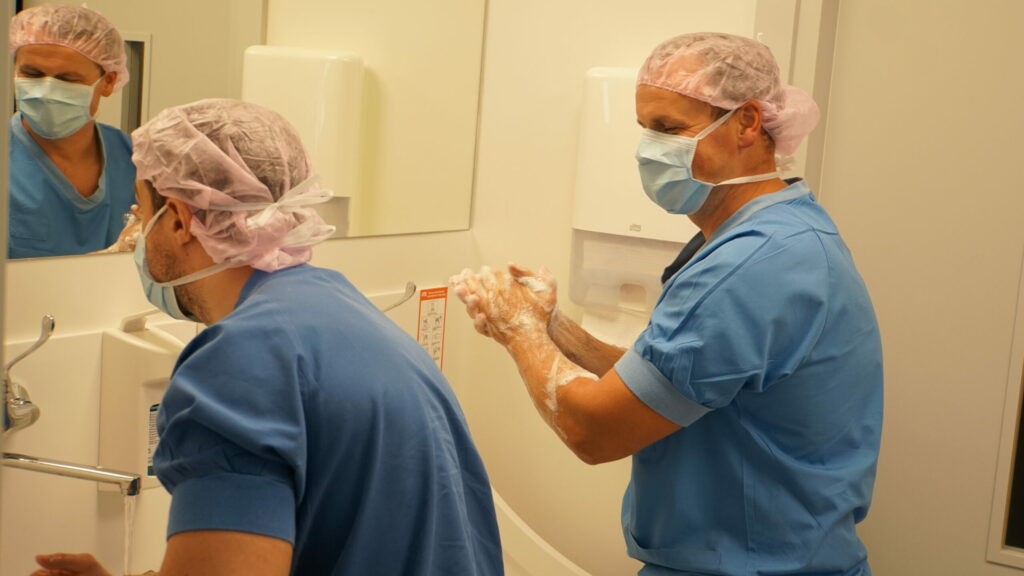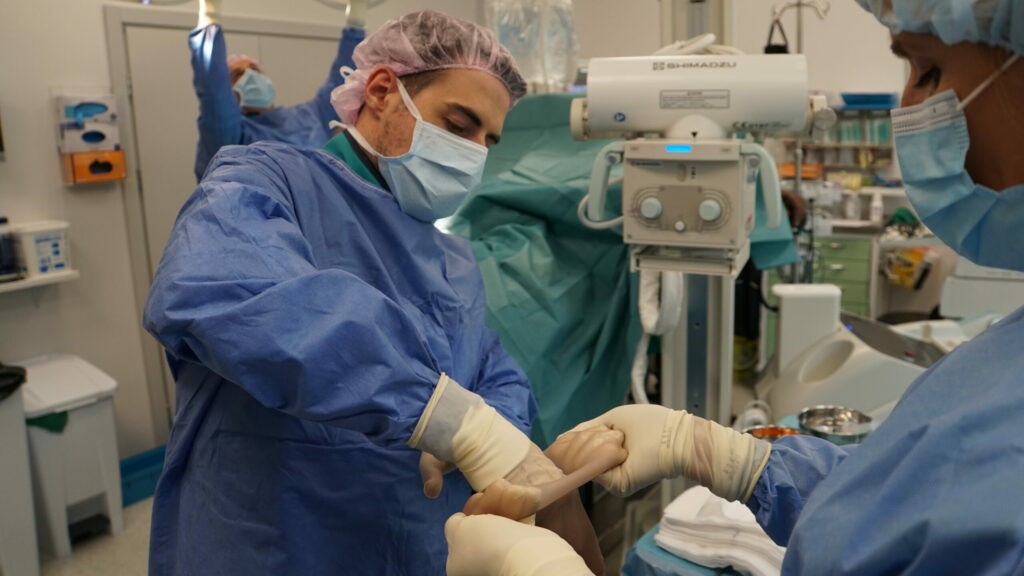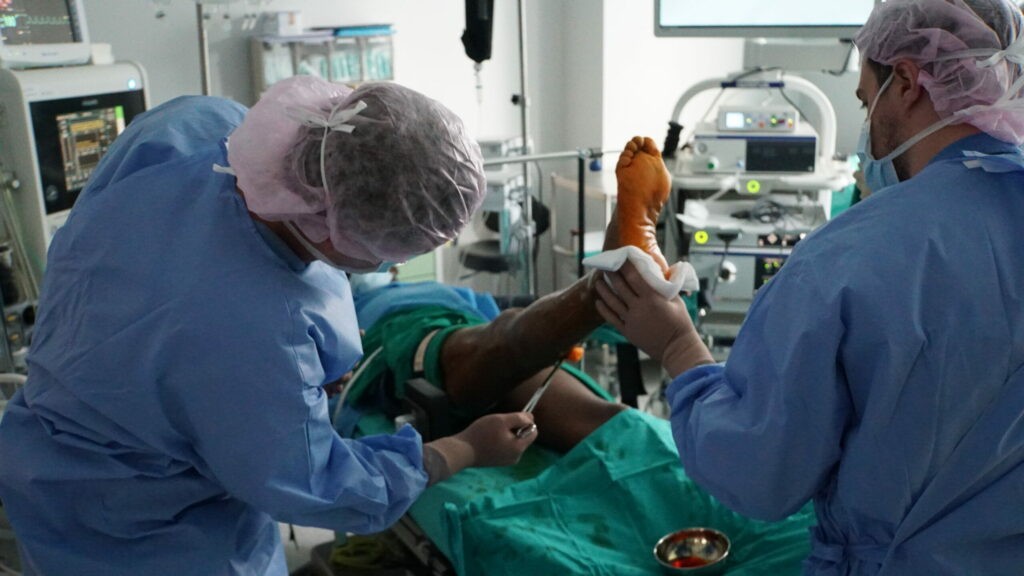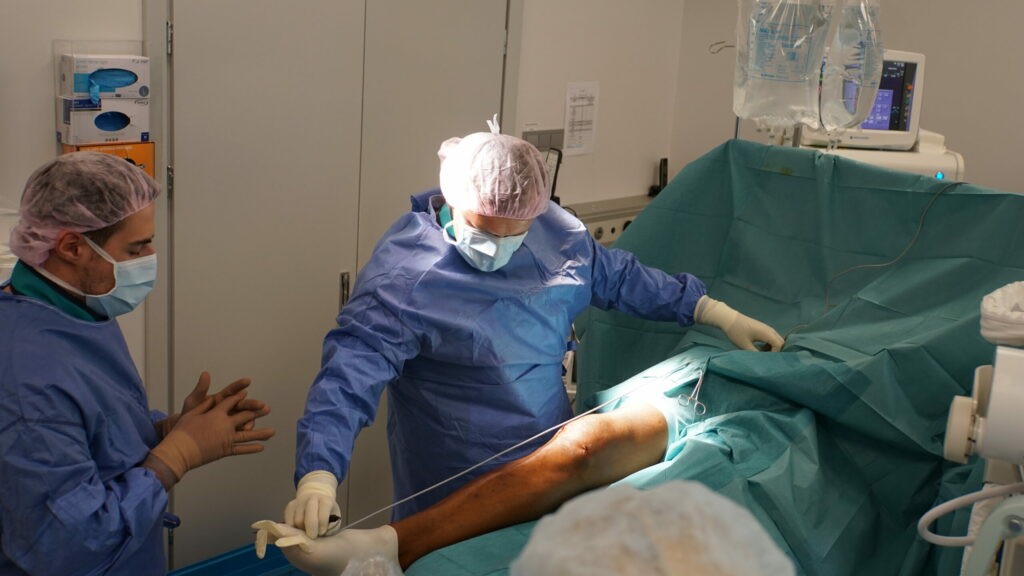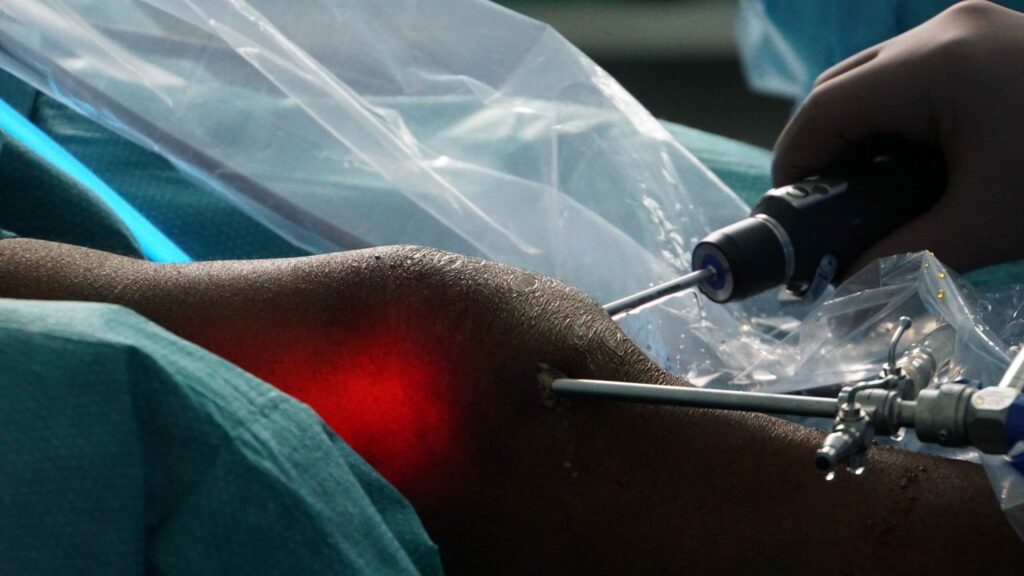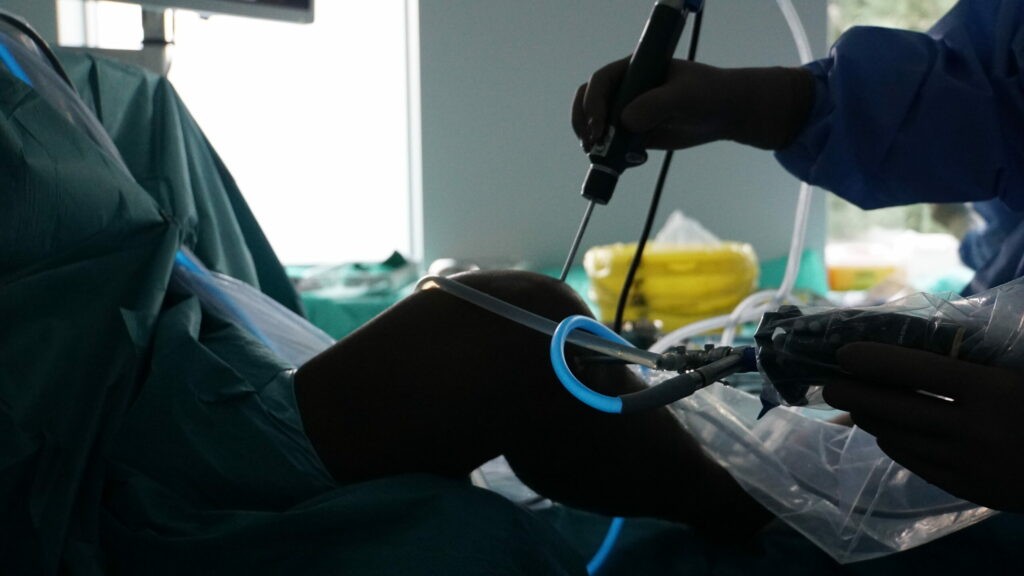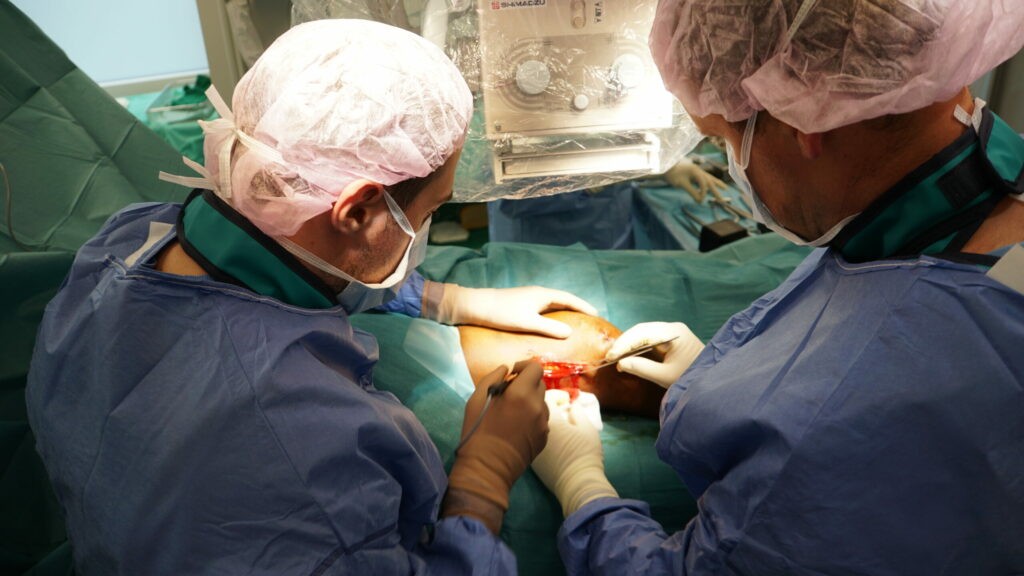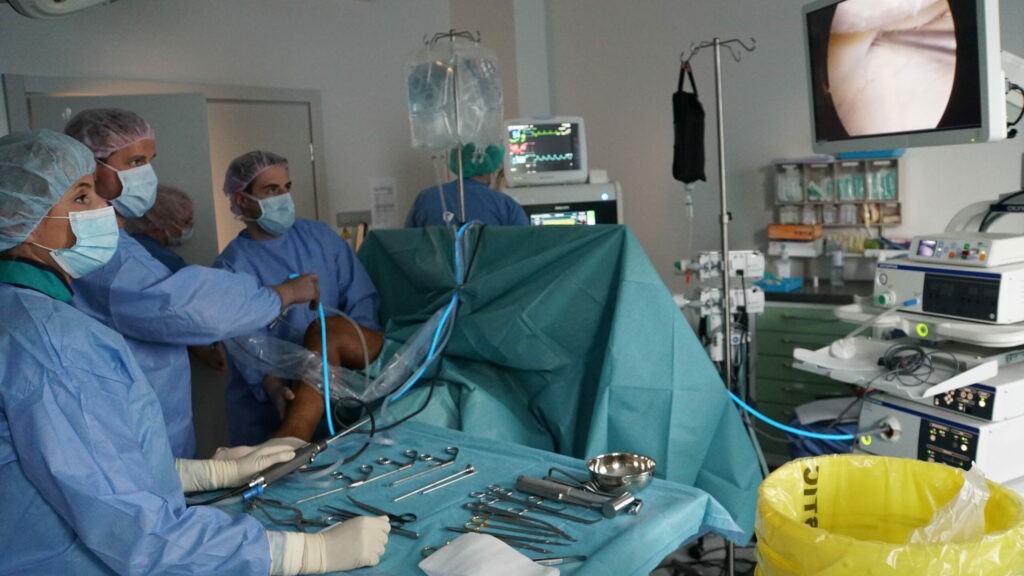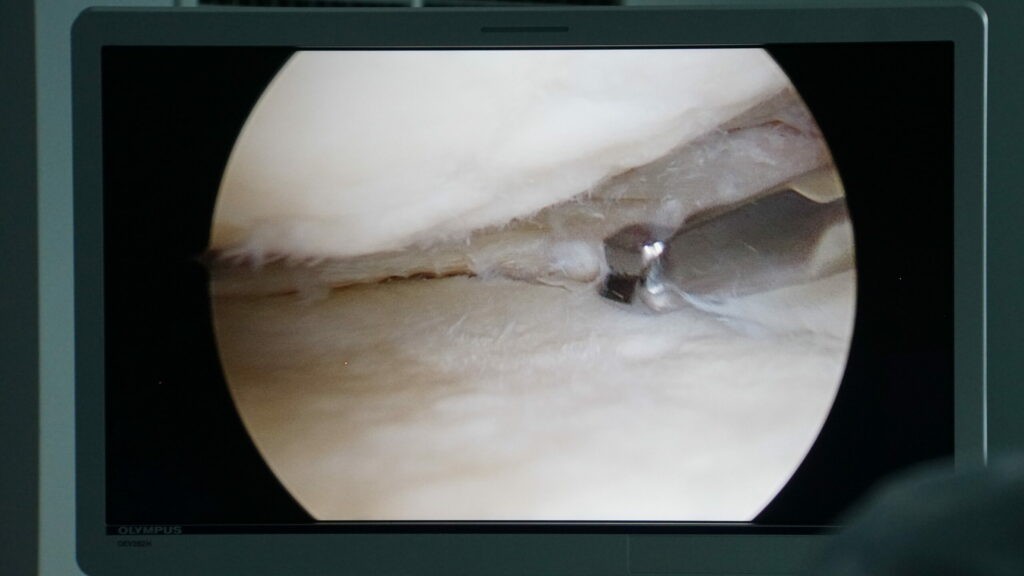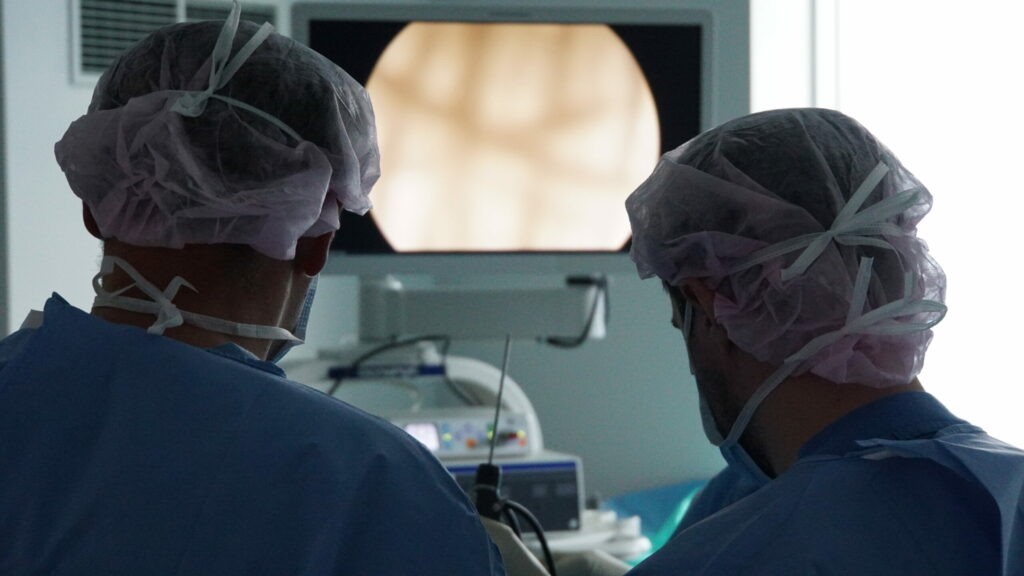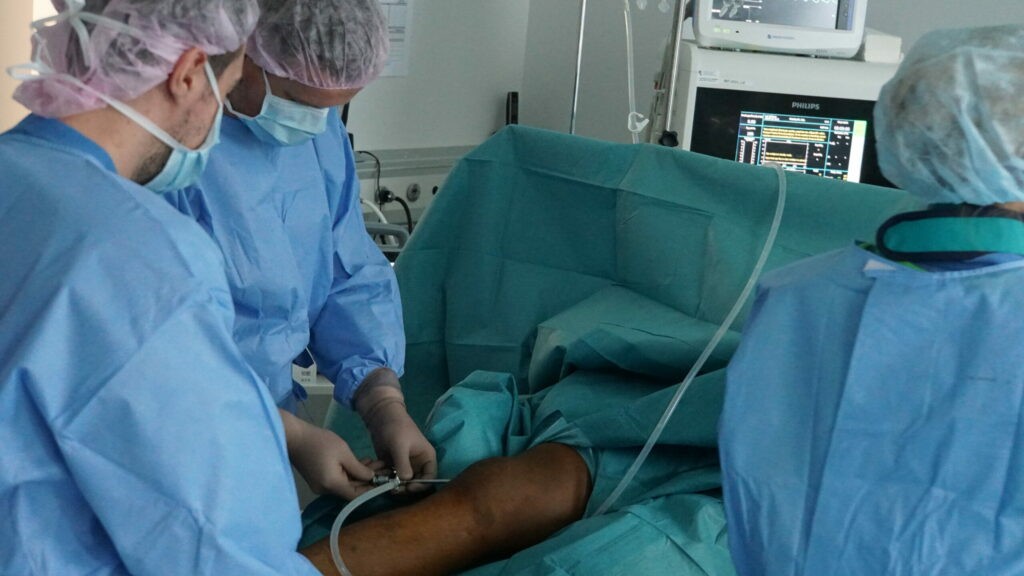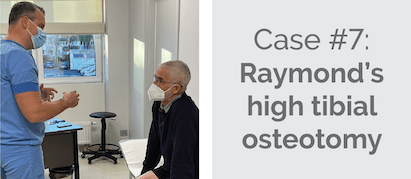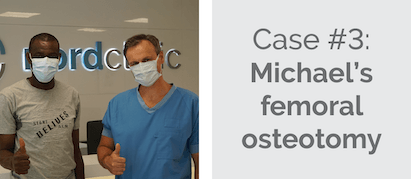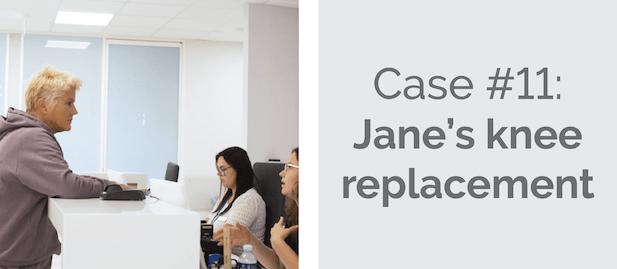Michael's story
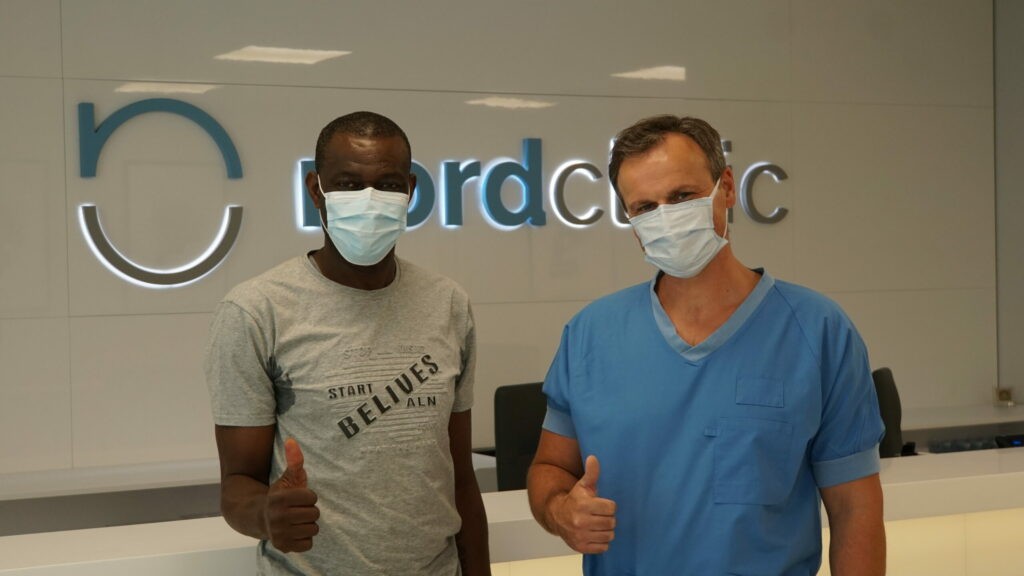
Michael's diagnosis
Performing the surgery
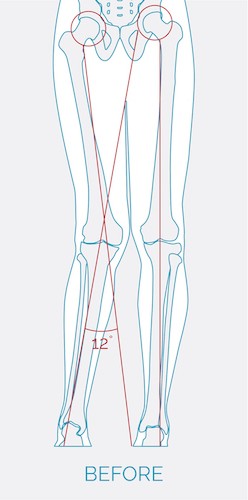

Considering that Michael works physically daily and has a high degree of deformation, which puts a strain on the other lower limbs joints, considering his young age and desire to try to maintain his own, albeit not very healthy knee joint it was decided to perform a femoral osteotomy.
During Michael’s surgery, open wedge osteotomy was performed (DFO). The point of this surgery is to adjust the total axis of the leg, by calculating the total length from X-rays, to deform the expense of the femur. Femoral osteotomy is performed, the axis is adjusted in intraoperative X-ray control, the bone is fixed with special structures until it is healed.
The goal of femoral osteotomy is to re-create a correct alignment between an upper thigh bone (femur) and lower leg bones (tibia and fibula). The result is not a permanent solution, the goal is to delay endoprosthesis.
Who can benefit from femoral ostetotomy?
Femoral osteotomy is generally recommended for young (<55 years old) and active patients. The main femoral osteotomy indication is the Valgus knee, also known as a knock knee deformity.
Femoral osteotomy ensures equal weight distribution, addresses gait abnormalities, relieves symptoms of arthritis, and slows the development of degenerative joint disease. Femoral osteotomy can help to postpone the need of total joint replacement surgery.
